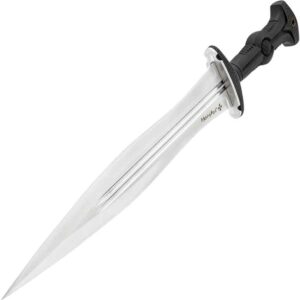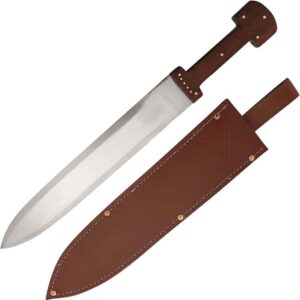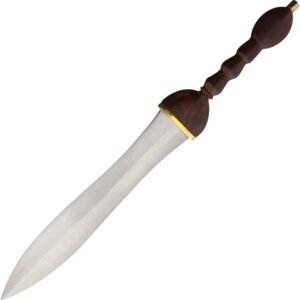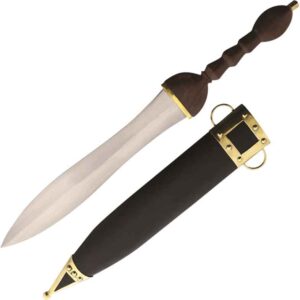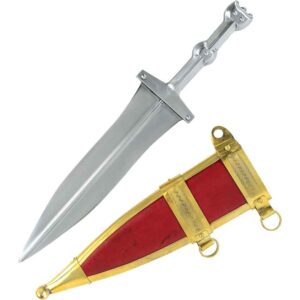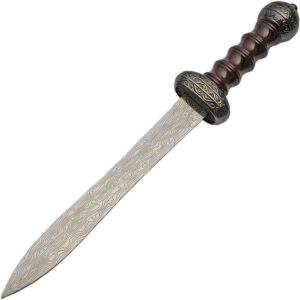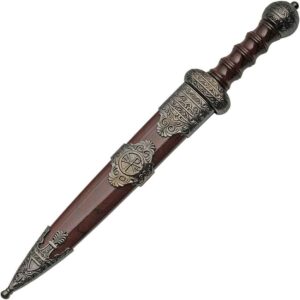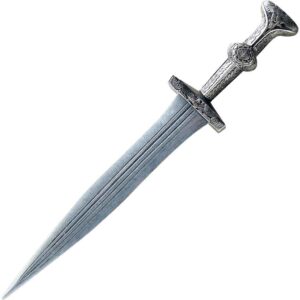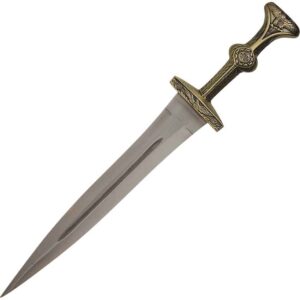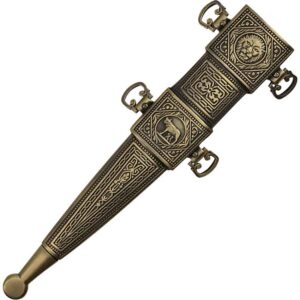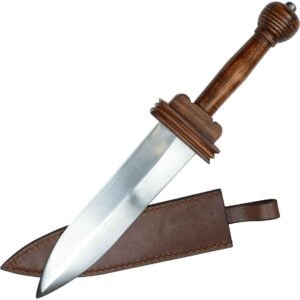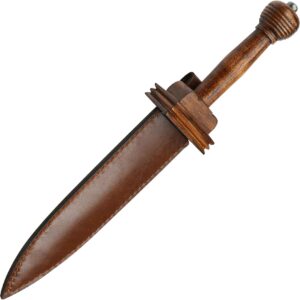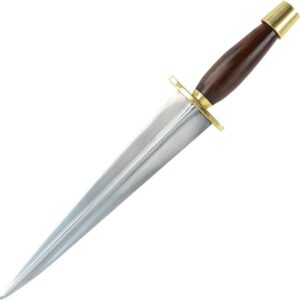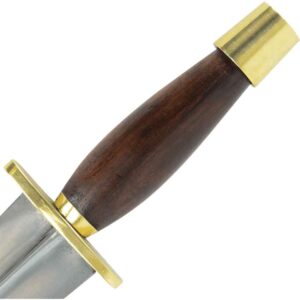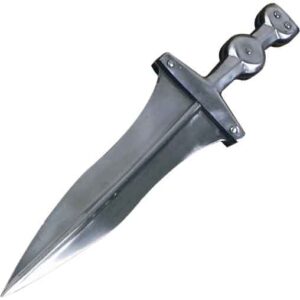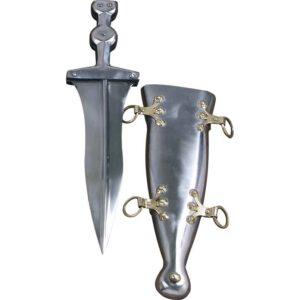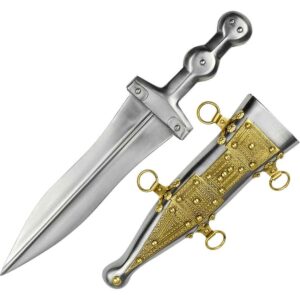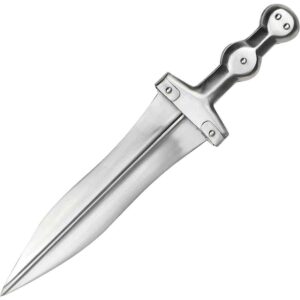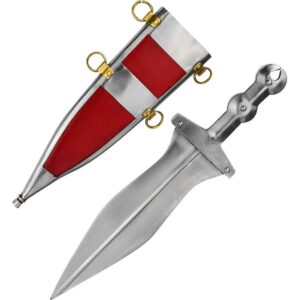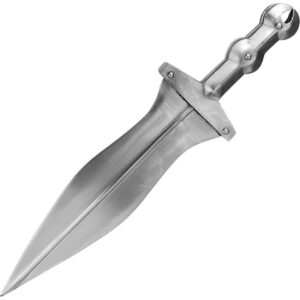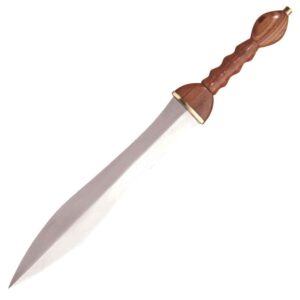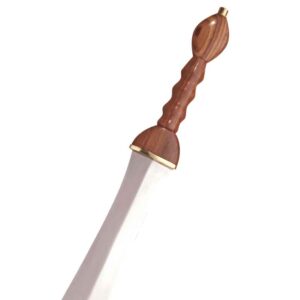-
Honshu Legionary Dagger with Sheath
$146.50 Original price was: $146.50.$106.00Current price is: $106.00.
Add to Bag
When you want to become a modern Roman centurion, why not wield a sword like one? Take the Honshu Legionary Dagger with Sheath to your next battle. This sword is great for tactical and survival missions.
-
Wood Hilt Pugio Dagger
$75.00
Add to Bag
Those looking for a dagger to add to their Roman warrior ensemble should make sure to check out the Wood Hilt Pugio Dagger. This dagger makes a great addition to any Roman decor, display, or collection.
-
Roman Warrior Pugio Dagger
$70.00
Add to Bag
Roman warriors such as yourself like to adorn your living space with weapons that look like the Roman Warrior Pugio Dagger. This dagger is a great piece to add to a Roman warrior ensemble or a Roman weaponry display.
-
Titleburg Pugio Dagger
$144.85
Add to Bag
Soldiers under the Roman empire, such as yourself, are highly skilled with your preferred weapon. You wield the Titleburg Pugio Dagger. This dagger makes a great addition to the outfit of any Roman officer at a historical reenactment.
-
Mini Ornate Roman Gladius Dagger
$16.00 Original price was: $16.00.$14.00Current price is: $14.00.
Add to Bag
Looking for a letter opener or dagger that takes on the design of a Roman gladius? Check out the Mini Ornate Roman Gladius Dagger. It makes a wonderful addition to any classical home decor or dagger collection.
-
Roman Dagger
$63.00
Add to Bag
The Roman dagger, or Pugio, was a standard weapon carried by the Roman Legions. This replica by Denix of a museum piece illustrates the skill of the artisan and the taste of the Roman officer who wore the original.
-
Roman Legionnaire Dagger
$39.00
Add to Bag
A regal take on the blade of a Roman soldier, the Roman Legionnaire Dagger is based on the ancient pugio dagger and is made ornate through antique gold coloring and intricate engravings throughout its hilt and matching sheath.
-
1st Century Pompeii Dagger
$61.69
Add to Bag
Well known as the city destroyed by a volcanic eruption, Pompeii has fascinated people for centuries. This 1st Century Pompeii Dagger is designed after findings from these ancient ruins so you can add it to your Roman themed collection.
-
Roman Parazonium Dagger
$79.33
Add to Bag
The Roman Parazonium Dagger was, as a symbol, often associated with and carried by Virtus, a lesser-known Roman god who presided over military strength – the very personification of virtue, valor, excellence, courage, and worth.
-
Basic Pugio Dagger
$152.41
Add to Bag
The pugio was a typical arm to be found at the side of virtually any Roman soldier, acting as a sort of badge of office, as well as a sidearm. This Basic Pugio Dagger is a variant of the pugio, appropriate for any unranked soldier.
-
Embossed Pugio Dagger
$152.41
Add to Bag
The pugio was a typical arm to be found at the side of virtually any Roman soldier, acting as a badge of office and honor and a sidearm. This Embossed Pugio Dagger is an ornate dagger appropriate for any ranked officer or general.
-
3rd Century Roman Pugio
$152.41
Add to Bag
After a century of little use, the pugio dagger made a sweeping comeback in the early third century. Becoming the sidearm of choice for Roman officers, the 3rd Century Roman Pugio inspires a sense of nobility and mortality.
-
Roman Pugio Dagger
$110.00 Original price was: $110.00.$74.86Current price is: $74.86.
Add to Bag
The wood hilt of this Roman Pugio Dagger is paired with a fully tempered high carbon steel blade. It comes complete with a wood scabbard covered in leather with brass parts. It is based on remains in the British Museum.
Two of the most common Roman dagger types are the pugio and the parazonium. Soldiers in the Roman armies were issued the long, thrusting dagger called a pugio, which was used for close combat, assassination, and suicide. Notably, when Julius Caesar was assassinated, the conspirators stabbed him with pugiones. Based on an Iberian blade, the parazonium dagger featured a long, triangular shape that was wide at the hilt and narrowed to a sharp point. The historical parazonium mainly served as a mark of rank, and the Roman deity Virtus is often depicted as carrying one. Here at Buying a Sword, we offer a range of Roman blades like gladiator daggers, legionnaire daggers, centurion daggers, and barbarian daggers. Our Roman pugiones include functional dagger and decorative dagger designs, ensuring that you can find the perfect option for your theatrical performance, weapons collection, and re-enactments.

